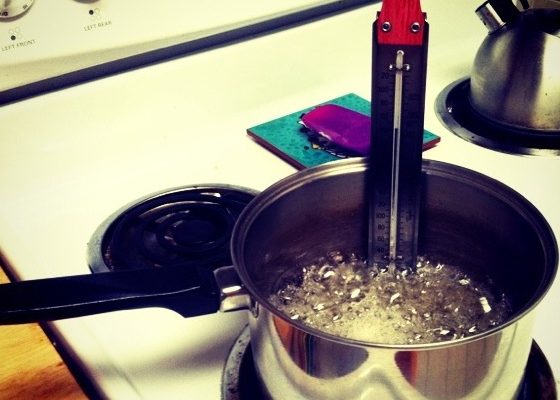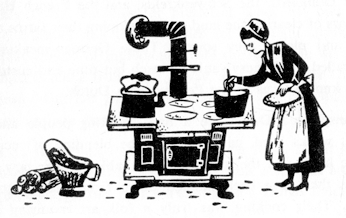Here’s a good tip from Miss Leslie’s book Seventy-Five Receipts for Pastry, Cakes, and Sweetmeats, published in 1832:
There can be no positive rules as to the exact time of baking each article. Skill in baking is the result of practice, attention, and experience. Much, of course, depends on the state of the fire, and on the size of the things to be baked, and something on the thickness of the pans or dishes.
Of course, professional chefs now stress getting your mise en place in order before you begin a recipe. For those unfamiliar with the term, it means “everything in it’s place” from ingredients, to pans and equipment, to preheating your ovens. She must have thought the same things over 175 years ago. Here are her preliminary baking tips – things to have in place before beginning a recipe. Some may not apply, but can easily be used in today’s kitchens.
-
Weigh out the ingredients carefully.
-
She had to pound and sift her flour before each use. While we don’t need to pound our sugar, sifting powdered sugar is a good idea to remove lumps.
-
All her spices were pounded except for nutmeg. In modern kitchens, spice mills are a real time saver and can produce better tasting confections simply because the spices are pungent and fresh.
-
She squeezed her butter to remove excess liquid, and had to wash it in cold water. Always use fresh butter, use it by the date on the package, and keep it tightly wrapped to keep out flavors. If the butter has an off-taste from the refrigerator or have a freezer burned taste, then the pastry made with it will have it, too.
-
Cream the butter and sugar well before adding or whipping the whites or whole eggs. How did she do it?
“For stirring [the sugar and butter], nothing is so convenient as a round hickory stick about a foot and a half long, and somewhat flattened at one end.”
-
Whip the eggs last to keep the full volume.
-
Here’s one that still is a great idea. If you’ve ever had a bad egg and it ruined the whole batch, you’ll understand. It doesn’t happen too often now (once for me) but it does happen. Break every egg into a smaller separate container then add it to the rest of the batter. That way you can see if any are bad before ruining the whole batch.


